National Nutrition Survey reveals Gender Nutrition Gap, with women at risk of missing out on key nutrients
Data from the latest National Nutrition Survey has revealed a concerning nutrition gap between Australian men and women that could be impacting women's health.
The national survey from the Australian Bureau of Statistics shows women are eating 35% less red meat than men and averaging just 47.8g a day, well below the 65g recommended in the Australian Dietary Guidelines. Men are consuming 64.3g per day, just shy of the daily requirement.
Red meat is a high-quality protein and a rich source of zinc, essential B vitamins and iron. Iron deficiency is one of the most common nutritional challenges facing women.
Nutritionist and dietitian Susie Burrell is passionate about nutrition for women’s health. She says women who are nutrient deficient can feel constantly tired, experience brain fog and are more vulnerable to illness and infection.
“Women’s bodies go through incredible changes across their lives, from puberty to pregnancy to perimenopause and then post menopause. Each stage brings unique nutritional needs that can be supported with a healthy balanced diet, but the latest nutrition survey shows women may be at risk of missing out on key nutrients,” said Ms Burrell.
A You Gov survey of attitudes towards red meat consumption, commissioned by MLA, found that 81% of women were aware that eating red meat 3-4 times per week forms part of healthy diet but less than half (41%) believed they meet the Australian Dietary Guidelines recommendations.
While most women knew that red meat is an important source of protein (72%) and iron (70%), many did not know of the specific benefits to women which reveals a knowledge gap around the role of red meat in women’s health:
- Just 44% of women know red meat is beneficial during pregnancy.
- Just 39% during menstruation (their period)
- Only 32% during perimenopause
Red meat is especially beneficial during pregnancy, menstruation and perimenopause because these stages increase a women's requirements for iron, vitamin B12 and high-quality protein, which red meat provides in highly absorbable forms.
These stages are at a higher risk for nutrient deficiencies and it's important for women to prioritise nutrient rich sources such as red meat as part of a healthy diet.
Millennial women surveyed were least informed on the benefits for women’s health, while their Gen Z counterparts were more informed and better fuelled.
Millennial women, who make up the majority of expectant mothers, are less likely to be aware of benefits whilst planning a pregnancy (30%) and during pregnancy (37%).
Gen Z were more likely to identify red meat as beneficial during their period (42%) compared to millennial women (28%). This younger age group also eats the most red meat, at 57g per day, although this is still below the daily recommendation.
“As an important source of iron, protein, zinc and Vitamin B12, red meat has a key role to play in supporting women throughout their lives” said Ms Burrell.
“Key nutrients important to women’s wellbeing are more readily bioavailable from red meat, meaning they are more easily absorbed. Additionally, red meat helps the absorption of nutrients from other foods, such as vegetables, when eaten together.”
MLA’s Group Manager – Food & Nutrition, Monique Cashion, says that women can make simple changes to their diet that will leave them feeling more energised and healthier.
“There are many ways to add a little more meat and few more nutrients to your diet. Think beef mince in tacos, spaghetti bolognaise, lamb chops or a classic roast,” said Ms Cashion.
“A palm sized piece of red meat three to four times per week served with vegetables is an easy and natural way to adopt a healthy and nutrient adequate diet.”
To help Aussies incorporate red meat into a healthy diet, MLA has also developed an evidence based red meat nutrition guide for nutrition educators available online at: MLA Healthy Meals.
Notes to Editors:
All figures, unless otherwise stated, are from YouGov Plc. Total sample size was 1029 adults. Fieldwork was undertaken between 1st - 3rd September 2025. The survey was carried out online. The figures have been weighted and are representative of all Australian adults (aged 18+).
Consumption data is taken from the latest National Nutrition and Physical Activity Survey released on Friday 5th September.
National Health and Medical Research Council (2013). Australian Dietary Guidelines. Canberra: NHMRC.



